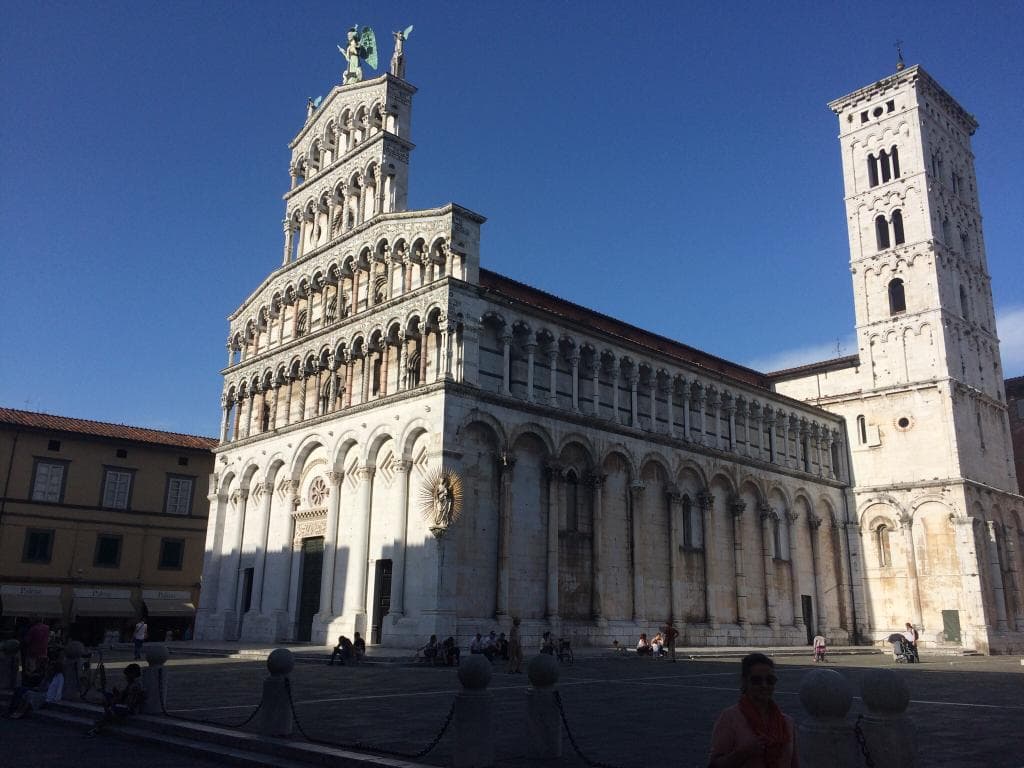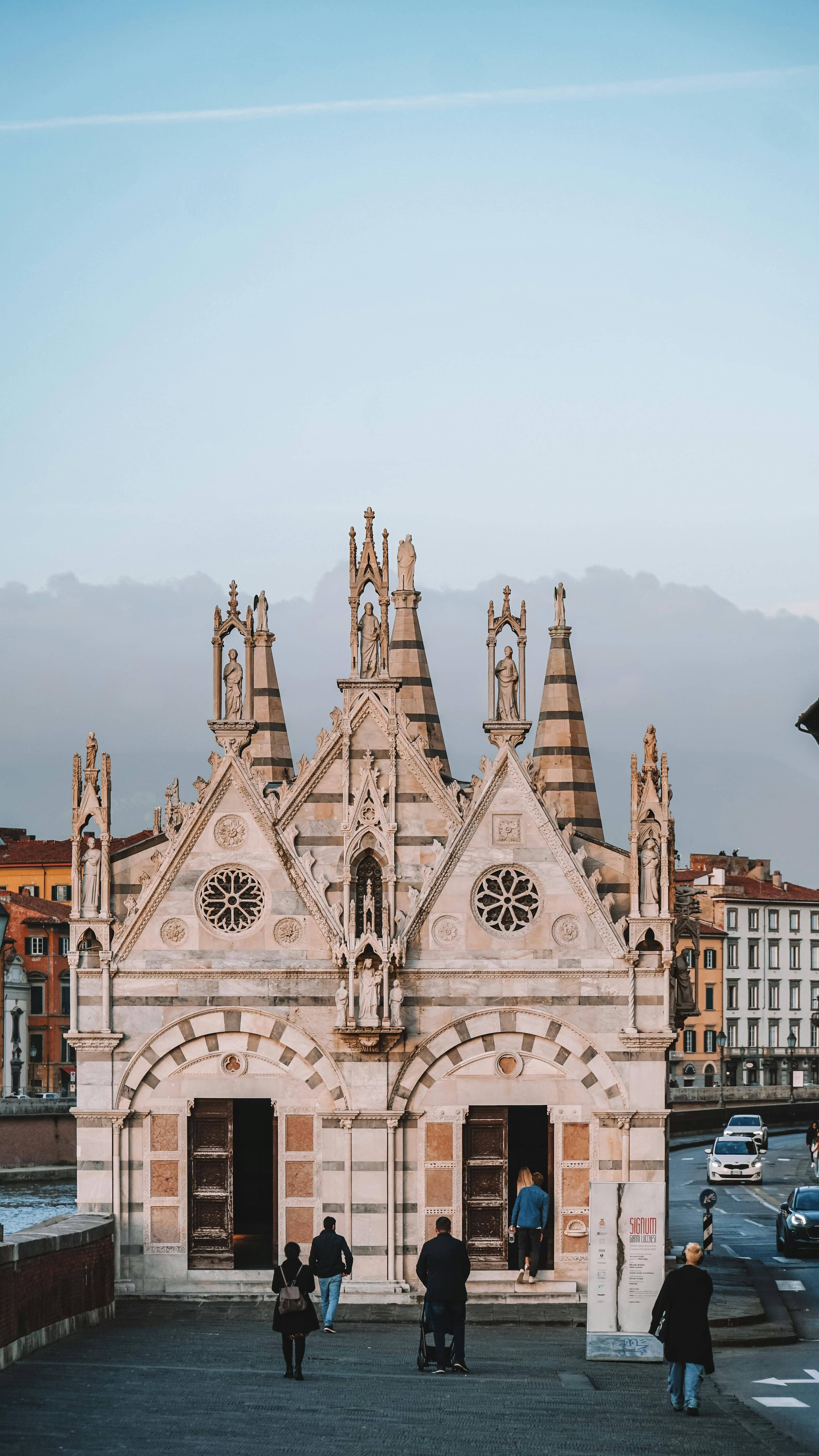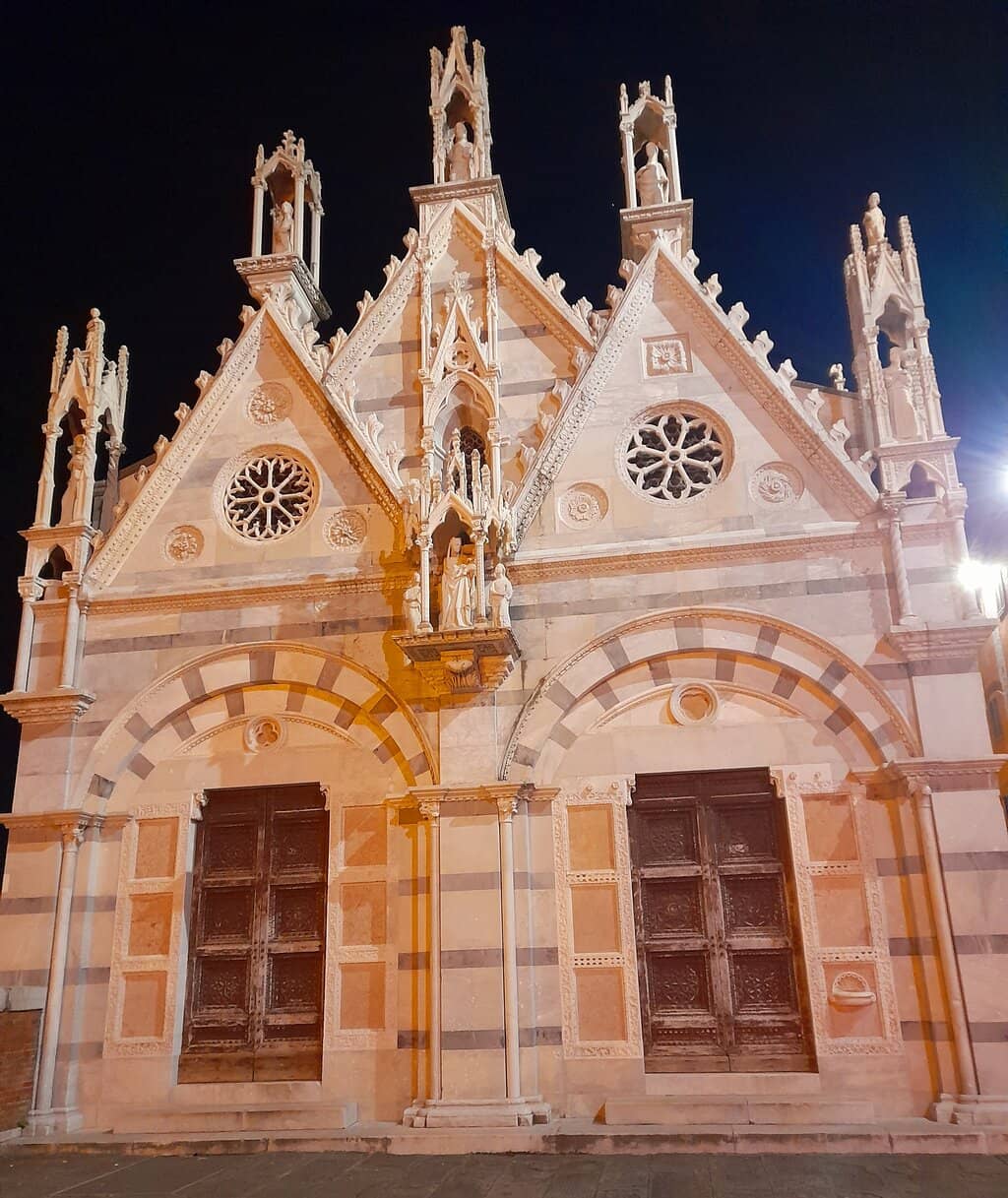
Santa Maria della Spina
A tiny, ornate Gothic church on the Arno River, once housing a sacred relic and now an exhibition space.

Highlights
Must-see attractions

Social
From TikTok & Reddit
Best Time
Golden hour glow on the river

Santa Maria della Spina
Best Time
Golden hour glow on the river

Highlights
Must-see attractions
A tiny, ornate Gothic church on the Arno River, once housing a sacred relic and now an exhibition space.
"Beautiful small church looks like a small cake of the edge of the road is one of the must places to visit in Pisa south bank."

Free Entry! 🎉
Admission to Santa Maria della Spina is free, making it an accessible stop on your Pisa itinerary.
Sunset Views 🌅
The church is stunning at sunset, offering beautiful photo opportunities along the Arno River.

Highlights
Discover the most iconic attractions and experiences

Ornate Gothic Facade
Marvel at the intricate marble carvings and delicate spires of this small Gothic masterpiece.

Riverside Location
The church's unique position on the Arno River bank offers picturesque views, especially at sunset.

Exhibition Space
Explore the interior, now an exhibition hall for religious artworks, offering a glimpse into its past.
Plans like a pro.
Thinks like you
Planning Your Visit
A Riverside Gothic Gem
Timing Your Visit
Best Times
Insider Tips
from TikTok, Instagram & Reddit
Free Entry! 🎉
Admission to Santa Maria della Spina is free, making it an accessible stop on your Pisa itinerary.
Sunset Views 🌅
The church is stunning at sunset, offering beautiful photo opportunities along the Arno River.
Gothic Architecture 🏛️
Admire the intricate marble details and unique Gothic style of this small but impressive church.
Exhibition Space 👗
The church now functions as an exhibition hall for religious art, so check schedules for displays.
Tips
from all over the internet
Free Entry! 🎉
Admission to Santa Maria della Spina is free, making it an accessible stop on your Pisa itinerary.
Sunset Views 🌅
The church is stunning at sunset, offering beautiful photo opportunities along the Arno River.
Gothic Architecture 🏛️
Admire the intricate marble details and unique Gothic style of this small but impressive church.
Exhibition Space 👗
The church now functions as an exhibition hall for religious art, so check schedules for displays.
Riverside Charm 🌊
Its location right on the Arno River adds to its picturesque appeal.
What Travellers Say
Reviews Summary
Visitors praise Santa Maria della Spina as a 'Gothic jewel' and a 'small cake' on the riverbank, highlighting its exquisite Gothic architecture and picturesque riverside location. Many appreciate the free entry and the unique history behind its name and relocation. While no longer a church, its current use as an exhibition space is noted.
"Gothic Jewel of Pisa
Built in 1230, it's one of the finest examples of Gothic architecture in Italy, known for its exquisite detail, despite being a very small church.
---
🦷 "Della Spina" Means "of the Thorn"
The church is named after a thorn from Christ’s crown of thorns (spina in Italian), which was once kept there as a relic. The thorn is now housed in a museum, but the name remains."
Haydar Levent
"Beautiful early 12th century small church built of white marble on the south bank of the river Arno, right on its edge. Church is now used are and exhibition hall, not as a church anymore, but ones holds a thorn from the Crown of Christ (spina). Church was in late 19th century dismantled and rebuilt on higher level because of infiltration of the water from river Arno.
Beautiful small church looks like a small cake of the edge of the road is one of the must places to visit in Pisa south bank. It's one of the best preserved Gothic architecture in whole Italy.
Entrance is free."
Tomi Valny
"I only saw this by night, but it’s truly beautiful from the outside, seemingly hanging over the river bank"
Charlotte Heffer
What People Like
What People Dislike
Frequently Asked Questions
🚇 🗺️ Getting There
Santa Maria della Spina is located on the south bank of the Arno River, a pleasant walk from the Leaning Tower of Pisa. It's about a 15-20 minute stroll across the river. You can follow the Arno River westwards until you reach the church.
Yes, the church is easily accessible. You can take local buses that run along the Lungarno (riverfront roads) in Pisa. It's also a walkable distance from the main tourist areas.
The church is situated directly on the south bank of the Arno River in Pisa, Italy, specifically on Lungarno Gambacorti.
Driving directly to the church can be challenging due to limited parking and ZTL (limited traffic zones) in Pisa's historic center. It's generally recommended to park in a public car park and walk or take public transport.
Santa Maria della Spina is approximately a 20-25 minute walk from Pisa Centrale train station. You can also take a local bus or a short taxi ride.
🎫 🎫 Tickets & Entry
No, entry to Santa Maria della Spina is generally free. It is no longer used as a church but as an exhibition space for religious artworks.
As it's now an exhibition space, opening hours can vary depending on any current displays. It's best to check local listings or inquire on-site for specific exhibition times.
While the church itself is free to enter, there might be a fee for specific art exhibitions held inside. This varies depending on the event.
You can admire the church from the outside at night, and it's beautifully illuminated. Access to the interior for exhibitions would be during daytime hours.
It functions as an exhibition space, so its availability for viewing depends on whether an exhibition is currently being held. It's advisable to check for current events.
🎫 ⛪ Onsite Experience
The church's name, 'of the Thorn,' comes from a relic of a thorn from Christ's crown that was once housed here. This relic is now in a museum.
Inside, you'll find it's set up as an exhibition hall for religious artworks. The original pews are gone, creating an open space to view the art.
No, it is no longer a place of worship. It was deconsecrated and is now used as a venue for exhibitions of religious art.
It is a prime example of Pisan Gothic architecture, known for its delicate beauty and ornate marble detailing.
The church was originally built closer to the river and was dismantled and rebuilt on a higher level in the mid-19th century to protect it from flooding.
📸 📸 Photography
Sunset is highly recommended for photography, as the golden hour light illuminates the church and the Arno River beautifully. Early mornings can also offer soft light and fewer crowds.
While the interior is now an exhibition space, the architecture and any displayed religious art can be photogenic. However, check if photography is permitted for current exhibitions.
You can capture stunning exterior shots from across the river, close-ups of the intricate marble facade, and wider shots incorporating the Arno River and surrounding Lungarno.
Visiting early in the morning or later in the evening (for exterior shots) can help minimize crowds. Weekdays are generally less crowded than weekends.
Its unique Gothic architecture, delicate marble work, and picturesque riverside location make it incredibly photogenic.
For Different Travelers
Tailored advice for your travel style
👨👩👧 Families with Kids
Since it's now an exhibition space, it's a good opportunity to introduce children to religious art in a less formal setting. Keep the visit brief and focus on the visual aspects to maintain their interest. The free entry is a bonus for budget-conscious families exploring Pisa.
📸 Photography Enthusiasts
Experiment with different angles – from across the river for a classic view, or up close to capture the marble work. The illuminated exterior at night also presents a unique photographic challenge and reward. Remember to check if interior photography is allowed for any current exhibitions.
🏛️ Architecture & History Buffs
As an exhibition space, it offers a chance to see religious art within its historical context. The transformation from a sacred site to a cultural venue is also a fascinating aspect to explore.
Deep Dives
In-depth insights and expert knowledge
The Gothic Jewel of Pisa
Its current name, 'della Spina' (of the Thorn), originates from a relic of a thorn believed to be from Christ's crown of thorns, which was once housed within its walls. This relic is now preserved in a museum, but the church retains its evocative name and historical significance.
The church's unique riverside location is also a key part of its story. It was moved to its current, higher position on the Lungarno Gambacorti in the mid-19th century to protect it from the Arno River's frequent floods. This relocation preserved the structure and its delicate beauty for future generations to admire.
From Sacred Space to Exhibition Hall
When visiting, you'll find the interior has been adapted to accommodate displays. The traditional pews have been removed, creating an open area where art can be showcased. This setup offers a different kind of experience, focusing on the visual and historical aspects of the church's contents rather than its original spiritual purpose.
While the relic of the thorn is no longer present, the church's history as a sanctuary for sacred objects is palpable. Exploring the interior as an exhibition hall provides a unique perspective on how historical religious sites can be preserved and utilized for cultural and educational purposes.






Social
from TikTok, Instagram & Reddit